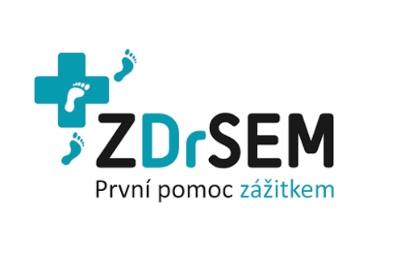Who hasn´t experienced it before ? Moment of inattention, bad step, and here we go ! Sprained ankle in better case, broken bone in the worse case. What do we do in such situations and how it can be treated ? We will look at it in these arcticles so you are prepared when something happens on your trips. Today we look at those better cases which are soft-tissues.
Common limb injuries include sprain, strains, dislocations, bruises, tendon rupture and fractures (broken bones). Sometimes it is easy to recognize the injury at first glance, at other times its accurate determination may be quite a problem. So how do we decide what type of injury we are facing so we can proceed correctly ?
Do not diagnose but evaluate
The basic rule is do not diagnose. Leave the final verdict to doctors. The final diagnosis is not essential to provide first aid. Just evaluate the seriousness of the situation correctly.
Why is that ? During this situation you can be under stress as well as when you are somewhere in the wild, you may also be facing not really ideal conditions and it is quite possible, that you don´t see the injury properly under your clothing. Moreover, if you really put trust to an incorrectly determined diagnosis, your further procedure may lose its efficiency. And how many of us can really say that they are experts and can determine the injury precisely ?

For some injuries we can use help of elastic bandage.
However, what you can do is to evaluate the severity of injury and decide on the next steps.
What to evaluate:
- The shape of the limb. Is the limb at a natural angle? Does it have a normal shape?
- Mobility. Is the range of movement preserved? Is movement painful?
- Sensitivity of the fingers. Can the injured person move fingers? Does he/she feel tingling in the fingers?
- Blood circulation. Are the fingers equally warm, do they have the same color?
Soft tissues – what is the procedure ?
We can divide limb injuries into soft tissues and more serious injuries. With the soft tissues we can put some pressure on the limb and to a limited extent still use it. This can be for example sprained ankle, when the ligaments are undamaged, the injured person is limping, but still can step on his leg.

With the soft tisues we can still put some pressure on the limb. Source: ZDrSEM.
With the soft-tissues, the blood circulation and sensitivity of the fingers should be fine and the injured person can move his/her fingers. The range of movement also remains normal. Swelling may occur. In such cases transport can be postponed.
First help during these injuries = RICE
- R – REST - avoid moving the limb.
- I – ICE - put an icepack on the sore area for 15-20 minutes at a time, using a covered icepack or bag of frozen peas. Repeat every 2 to 4 hours. Be careful here so you don´t cause frostbite.
- C – COMPRESSION - bandage the area firmly.
- E– ELEVATION - keep the limb raised.
Find medical attention when deteriorating, otherwise at discretion. You can take anti-inflammatory drugs and analgetics or apply ointments.
More serious injuries
With the more serious injuries, we can not put the pressure on the limb. It is characterized by deformity or sensitivity. In such cases, immediate transport as well as call ambulance is necessary.
If you are outside of the civilization and the ambulance is not within the reach, it is necessary to fix the limb and think about the possibility of the improvised transport. The more detailed description will po possible to find in our next article.
Obtékání obrázku vpravo s rámečkem

DrSEM – HORAL First - Aid Course
This 5 and half-day outdoor first aid course will teach you how to respond in places where professional assistance is hours away or there is no possibility of professional assistance at all, and you will have to rely on yourself. More info onwww.zdrsem.cz/horal.
The article was created in cooperation with Dita Voltr Podhadska, ZDrSEM first-aid instructor and organizator of HORAL First-Aid Course..
Did you like this article?
- Hana Sedláková
- Hanka is really into the outdoors. She loves mountains, hiking, bivouacking and outdoor related stuff in general. However, she is also keen to meet new people and cultures, to learn new languages and to find different interesting places. Her children are also usually involved.
To the magazine